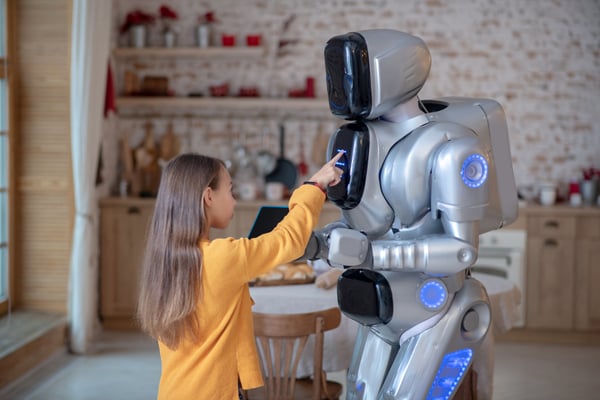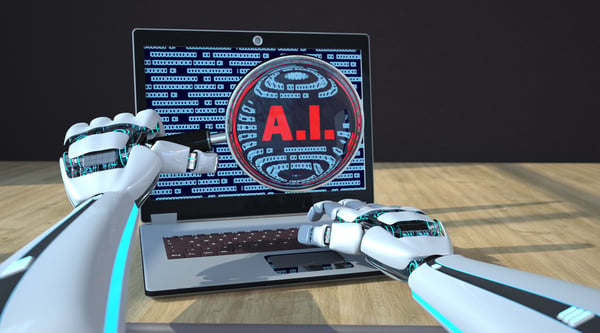AI for All, How Do We Secure It?

At the recently concluded CES 2024, numerous corporations showcased their cutting-edge technologies, among which were advancements incorporating artificial intelligence. Notably, Samsung Electronics introduced 'AI for All,' aligning seamlessly with one of MIT Technology Review's 'Top 10 Breakthrough Technologies of 2024,' titled 'AI for Everything.' The previous year witnessed ChatGPT from OpenAI becoming a significant sensation. Sam Altman, having been dismissed and subsequently rehired by OpenAI, was also counted among the notable figures of 2023. Generative AI indeed was at the forefront of technological discussions, spurring both national and international tech giants into swift action. This year's CES displayed the fruits of extensive research and development in AI technologies, transcending the simplicity of being embedded in specific devices and instead becoming integrally linked with our daily lives, forming the core of our AI-centric technological environment.
While the Internet of Things (IoT) is commonly referenced under this single keyword, it's increasingly being described as the Internet of Everything (IoE). The epicenter of IoE's technology is, undoubtedly, artificial intelligence. Therefore, it seems quite reasonable to consider Samsung's 'AI for All' and MIT Technology Review's 'AI for Everything' as conceptually akin, albeit with minor differences in their interpretation. Ultimately, the technology of IoT, when fused with AI, is often referred to as AIoT. Thanks to the rapidly advancing intelligence of AI, everyday appliances like mobile phones, tablets, laptops, refrigerators, TVs, and air conditioners are not only interconnected but also contribute to enhancing the convenience and efficiency of our daily lives.

To illustrate a specific example, let's consider 'Ballie' unveiled by Samsung Electronics. First introduced as a prototype in 2020, Ballie is an AI robot, fondly referred to as 'our family's first AI member,' reminiscent of a pet companion. It follows people around, executing commands based on its AI foundation, and can move freely within the home when summoned, showcasing its integrated autonomous navigation capabilities. Ballie also contributes to creating an Internet of Things environment by interfacing with other devices. While just one example, it underscores how deeply artificial intelligence technology is permeating our everyday lives. In this context, discussing security issues becomes imperative. Han Jong-hee, Vice Chairman of Samsung Electronics, has rightly pointed out that 'without solving the issue of security, artificial intelligence cannot be truly innovative,' emphasizing the importance of addressing both technological accountability and user security.
When we talk about 'AI for All,' we cannot overlook the concerns and heightened awareness regarding AI's security challenges deeply ingrained in our daily lives. This issue is not exclusive to Samsung Electronics but is a major topic echoed by all big tech participants at CES 2024. Generative AI technology, while astonishing and beneficial across industries and daily life, can lead to malicious uses like sophisticated deepfakes, phishing, or hacking. Although these technologies are fundamentally designed to benefit the world, they are often accompanied by individuals or groups exploiting them. Moreover, as the Internet of Things evolves into the Internet of Everything and AI technology progresses into AIoT, the risk of personal data breaches becomes an inevitable concern. The issues with AI facial recognition technology extend beyond privacy infringement to include the challenges posed by technical errors, presenting a significant problem that requires resolution.
The advancement of technologies such as the Internet of Things (IoT), AI, and autonomous driving, facilitated by the development of networks and the expansion of protocol ranges, has undoubtedly made communication more efficient. However, this progress also brings the potential for increased cyber security threats. As technology advances, the risk of cyber-attacks, exploiting vulnerabilities in unseen ways for malicious gains, becomes a non-negligible threat. Considerations around unauthorized access and authentication methods are critical. Notably, over 90% of businesses with Operational Technology (OT) environments have experienced hacking. OT, in this context, refers to hardware and software used for detecting and altering signs in industrial equipment, infrastructure assets, and processes. This encompasses remote monitoring and control systems (SCADA, Supervisory Control And Data Acquisition), Programmable Logic Controllers (PLC), and the Internet of Things (IoT).
In manufacturing, one of the most rapidly digitalizing sectors within traditional industrial infrastructure, many enterprises operate in an OT environment. However, small and medium-sized manufacturers often struggle with effectively responding to these risks, despite anticipating them. As reliance on advanced technologies like AI, robotics, and networks is inevitable, designing a security architecture capable of preemptively blocking external threats and defending authentication processes has become essential. In this realm, SSenStone, renowned as a next-generation authentication security company, is at the forefront with its 'OTAC (One-Time Authentication Code)' technology. This dynamic, unidirectional authentication technology generates a unique, one-time authentication code for each use, ensuring both device authentication and data integrity for a secure and convenient AIoT experience. OTAC, known for its zero duplication and no potential reuse, allows only legitimate users and devices to access PLCs and other systems. Therefore, it minimizes issues like password cracking and system shutdowns.

The pace at which AI technology is advancing is indeed beyond imagination, and the swift and sophisticated responses of professionals in this field are equally astonishing. The evolution of AI technology necessitates advanced security measures, especially in the context of IoT devices and the infrastructure of smart factories, as previously mentioned. In the era of AIoT, it seems almost destined that security authentication technology must evolve in tandem with AI technology. This dual advancement is not just a necessity but perhaps a fate that we must embrace, ensuring both the progression and the protection of our increasingly interconnected world.